The Ultimate Yellow Bread Crumbs Extruder Guide to 2024
Introduction to Yellow Bread Crumbs Extruders
Yellow bread crumbs have become a staple in various culinary applications, prized for their distinctive color and texture. The production of these crumbs is optimized through the use of specialized machinery known as the yellow bread crumbs extruder. These extruders are designed to handle the unique requirements of creating yellow bread crumbs, ensuring consistency, efficiency, and high quality.
A yellow bread crumbs extruder functions by pushing bread dough through a series of molds or dies, creating the desired shape and size of the crumbs. This process not only shapes the crumbs but also affects their texture and moisture content. Modern extruders come equipped with advanced technologies that allow precise control over these variables, ensuring the final product meets specific standards.

Key Features of Modern Bread Crumb Extruders
Feature | Description | Benefits |
Automated Control Systems | Integrates PLCs and HMI for precise control over the extrusion process. | Enhances precision, reduces human error, and increases consistency. |
Energy-Efficient Motors | Utilizes advanced motor technology to minimize energy consumption. | Reduces operational costs and environmental impact. |
Hygienic Design | Built with food-grade materials and easy-to-clean components. | Ensures compliance with food safety regulations and simplifies maintenance. |
Variable Speed Drives | Allows adjustment of extrusion speed to meet specific production needs. | Offers flexibility in production and optimizes output. |
Advanced Cooling Systems | Incorporates cooling mechanisms to maintain optimal dough temperature. | Prevents overheating and ensures consistent product quality. |
Modular Components | Designed with interchangeable parts for easy upgrades and customization. | Enhances versatility and extends equipment lifespan. |
Real-Time Monitoring | Equipped with sensors and software for continuous process monitoring. | Enables proactive maintenance and quick troubleshooting. |
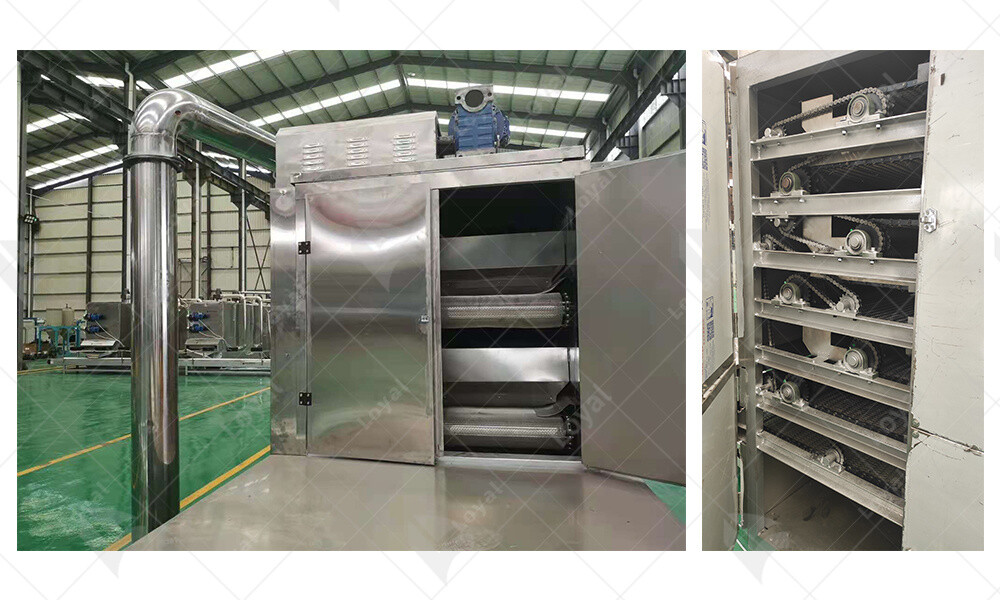
How Yellow Bread Crumbs Differ from Other Types
| Criteria | Yellow Bread Crumbs | White Bread Crumbs | Panko Bread Crumbs |
| Color | Bright yellow, often enhanced with food coloring. | Natural white or light beige. | Coarse, flaky texture with a white appearance. |
| Texture | Fine and consistent. | Fine to medium, depending on processing. | Light, airy, and flaky. |
| Flavor | Mild, with a slight buttery taste. | Neutral flavor, blends well with other ingredients. | Light and crispy, ideal for frying. |
| Common Uses | Breading for fried foods, toppings for casseroles. | General breading, filler for meatloaves, etc. | Japanese cuisine, particularly for tempura. |
| Production Process | Extruded and dried to achieve specific texture and color. | Ground from baked bread and toasted. | Made from crustless bread and processed for a unique texture. |
| Moisture Content | Low, ensuring long shelf life. | Varies, typically lower for longer shelf life. | Low, with a crisp finish. |
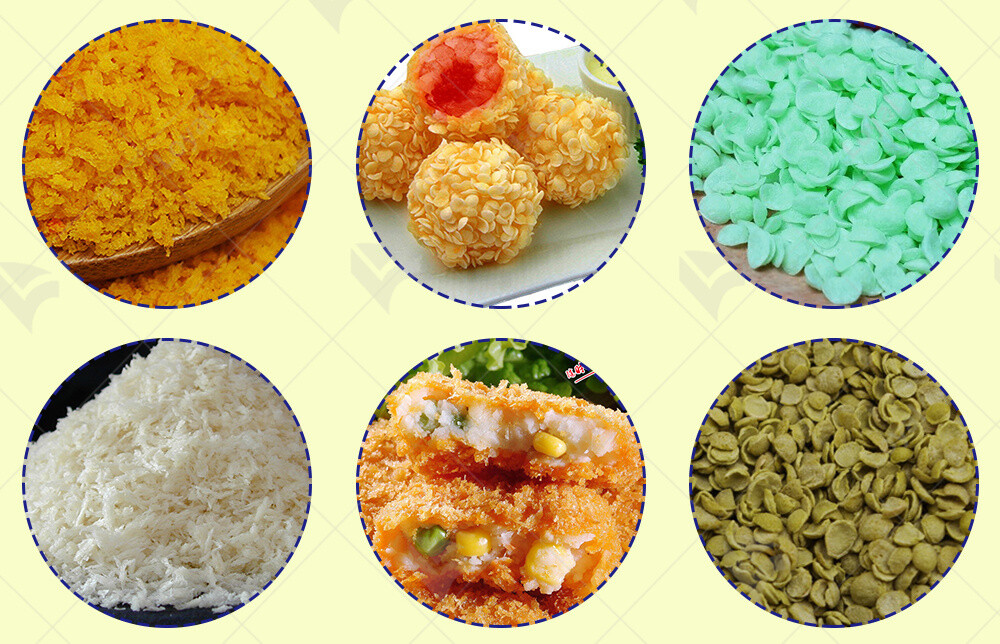
Essential Components of a Bread Crumb Extruder
Component | Description | Function |
| Hopper | Large container where bread dough is fed into the extruder. | Feeds the dough into the extrusion system. |
| Feed Screw | Screw mechanism that pushes the dough through the extruder. | Ensures consistent dough flow and pressure. |
| Extrusion Die | Molds or shapes through which the dough is forced to create crumbs. | Determines the size and shape of the bread crumbs. |
| Cutting Mechanism | Blades or wires that cut the extruded dough into specific lengths. | Controls the length and size of the crumbs. |
| Cooling System | Mechanism to cool the dough during extrusion. | Prevents overheating and maintains dough integrity. |
| Drying Chamber | Section where extruded crumbs are dried to the desired moisture content. | Reduces moisture content, ensuring shelf stability. |
| Control Panel | Interface for monitoring and adjusting extrusion parameters. | Allows operators to control temperature, speed, and other variables. |
| Sensors and Monitors | Devices to monitor temperature, pressure, and other critical parameters. | Ensures optimal operating conditions and product quality. |
| Output Conveyor | Belt system that carries finished crumbs from the extruder to the next stage. | Facilitates continuous production and transfer of finished product. |
| Lubrication System | Automated system to lubricate moving parts. | Reduces friction and wear, extending machine lifespan. |
| Safety Guards | Protective barriers around moving parts. | Ensures operator safety during operation. |
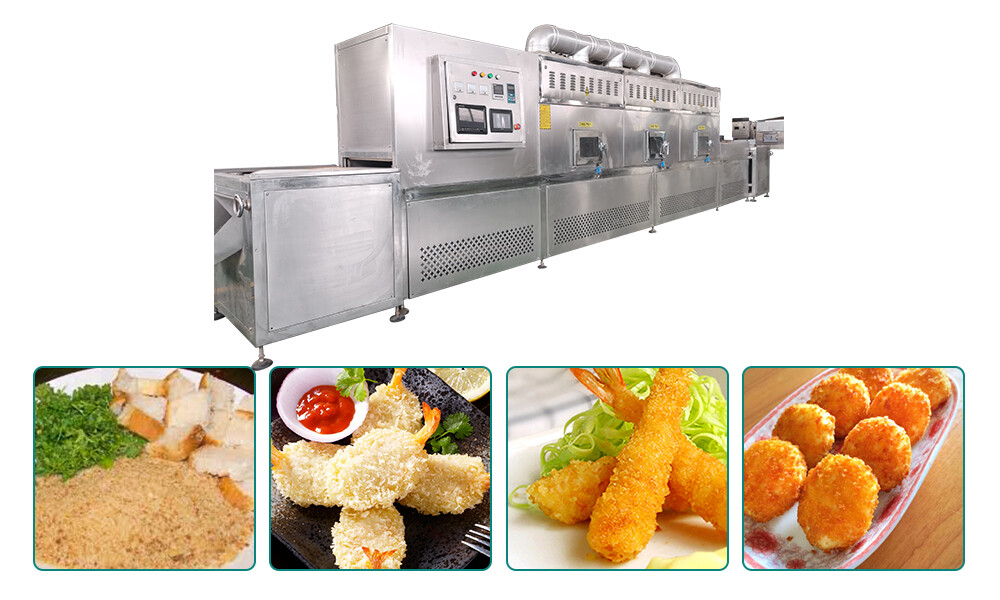
Preparing Dough for Yellow Bread Crumbs
The preparation of dough is a crucial step in producing high-quality yellow bread crumbs. The process begins with selecting the right ingredients, including flour, water, yeast, and coloring agents. Yellow bread crumbs extruders require dough with specific characteristics to ensure optimal extrusion and product quality.
Firstly, the flour used should have a high protein content to provide the necessary gluten structure. This is important for maintaining the dough's elasticity and strength during the extrusion process. Adding water at the correct ratio is essential to achieve the desired dough consistency. The water must be thoroughly mixed to ensure even hydration of the flour.
Secondly, yeast is added to the dough to initiate fermentation. This process enhances the dough's flavor and texture. For yellow bread crumbs, it is also common to incorporate coloring agents, such as turmeric or artificial colorings, to achieve the desired yellow hue. These agents must be evenly distributed throughout the dough to ensure a uniform color.
Finally, the dough must be kneaded until it reaches the appropriate elasticity and smoothness. Proper kneading develops the gluten network, which is essential for the dough to withstand the mechanical stress of extrusion. The dough is then allowed to rest and ferment, which helps to improve its texture and flavor further. Ensuring the dough is prepared correctly is critical for the efficiency and quality of the yellow bread crumbs extruder process.
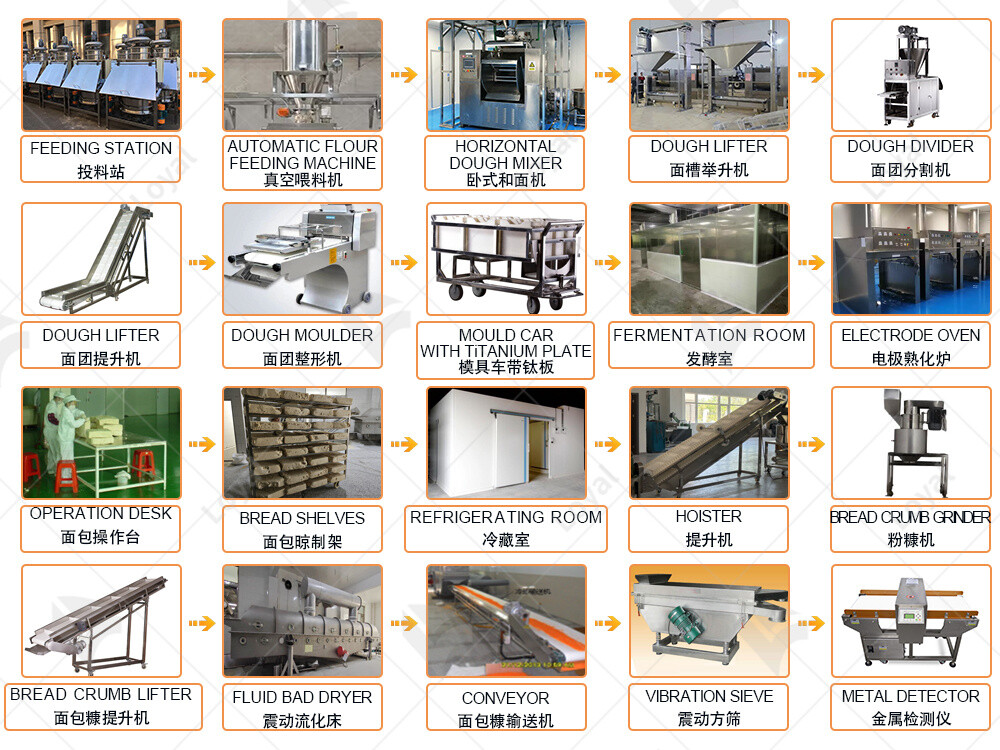
Extrusion Process for Yellow Bread Crumbs
The extrusion process is the heart of producing yellow bread crumbs. It begins with feeding the prepared dough into the yellow bread crumbs extruder. The extruder's screw mechanism pushes the dough through a die, shaping it into long strands. The consistency and temperature of the dough are meticulously controlled during this process to ensure uniformity and quality.
The dough's passage through the extruder involves high pressure and heat, which cook the dough and set its shape. This step is critical as it determines the final texture and structure of the bread crumbs. Maintaining a consistent temperature is crucial to avoid overcooking or undercooking, which can affect the product's quality.
Once extruded, the dough strands are cut into smaller pieces using specialized cutting equipment. The size of these pieces can be adjusted depending on the desired crumb size. After cutting, the crumbs are conveyed to a drying system. Efficient drying is essential to remove moisture and achieve the desired crispness in the final product. The drying process typically involves controlled heating and ventilation to ensure even drying without burning the crumbs.
Finally, the dried crumbs undergo a cooling phase to stabilize their texture and prevent clumping. Proper cooling ensures the crumbs maintain their individual structure and are ready for packaging. The entire extrusion process must be carefully managed to produce high-quality yellow bread crumbs consistently.
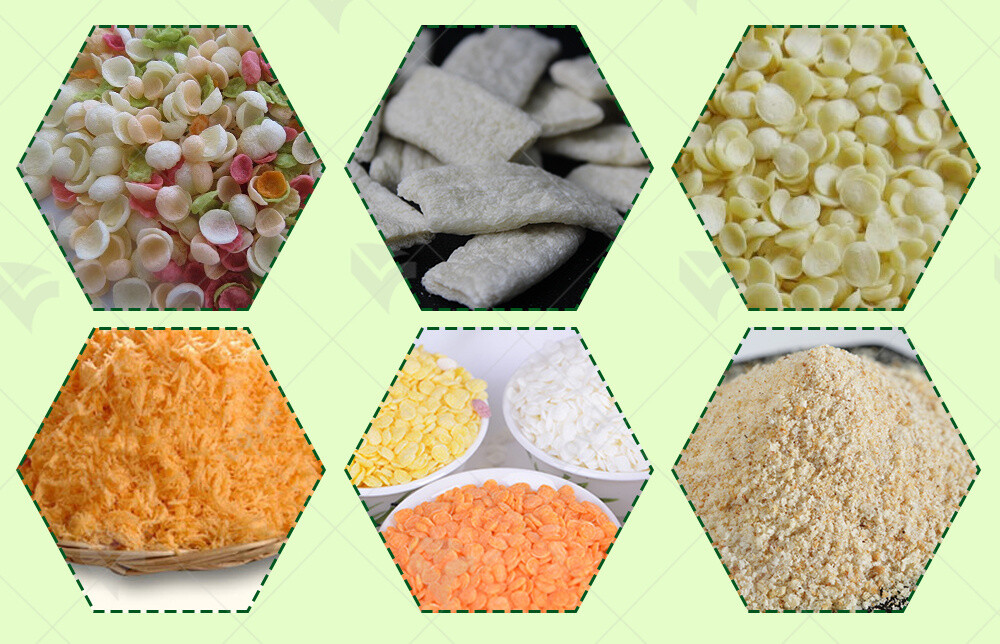
Packaging Solutions for Yellow Bread Crumbs
Effective packaging solutions are essential to maintaining the quality and shelf life of yellow bread crumbs. The choice of packaging material and design can significantly impact the product's freshness and marketability. Various packaging options are available, each with specific benefits for yellow bread crumbs extruders.
Plastic bags are a popular choice due to their flexibility, moisture resistance, and cost-effectiveness. These bags can be heat-sealed to protect the crumbs from moisture and contaminants, ensuring a longer shelf life. Stand-up pouches with resealable zippers offer a modern, convenient packaging solution that allows consumers to reseal the package, maintaining product freshness.
Paper bags, made from recyclable materials, are an eco-friendly option. These are particularly appealing to environmentally conscious consumers. While they may not offer the same moisture resistance as plastic, they provide adequate protection for dry products like bread crumbs when stored in a cool, dry place.
Cardboard boxes are another option, providing sturdy protection for larger quantities of bread crumbs. These boxes can be designed with inner liners to enhance moisture resistance and can be easily stacked and stored. Vacuum-sealed bags are ideal for extending the shelf life of bread crumbs by removing air, which helps prevent oxidation and spoilage.
Finally, custom-branded packaging enhances brand recognition and attracts consumers. Investing in high-quality, visually appealing packaging can differentiate a product in a competitive market. Packaging solutions must balance functionality, cost, and environmental impact to meet consumer and industry demands.

Automation in Bread Crumb Extrusion Lines
Automation plays a pivotal role in modern yellow bread crumbs extruder lines, enhancing efficiency, consistency, and scalability. Advanced automation systems integrate various processes, from dough preparation to packaging, ensuring smooth and continuous production.
Automated dough mixing and kneading machines ensure consistent dough quality, reducing human error and increasing production speed. These machines precisely control ingredient proportions, mixing times, and kneading intensity, resulting in a uniform dough that meets the required specifications.
In the extrusion process, automation allows for precise control over temperature, pressure, and extrusion speed. Programmable Logic Controllers (PLCs) and sensors monitor and adjust these parameters in real-time, ensuring optimal performance and product quality. Automated cutting equipment ensures uniform crumb size, and robotic arms can handle the delicate process of transferring crumbs to the drying system.
Automated drying systems utilize advanced technologies to maintain consistent drying conditions. These systems can adjust temperature and airflow based on real-time feedback, ensuring even drying and preventing product loss. Automation also extends to the packaging stage, where machines can fill, seal, and label packages quickly and accurately.
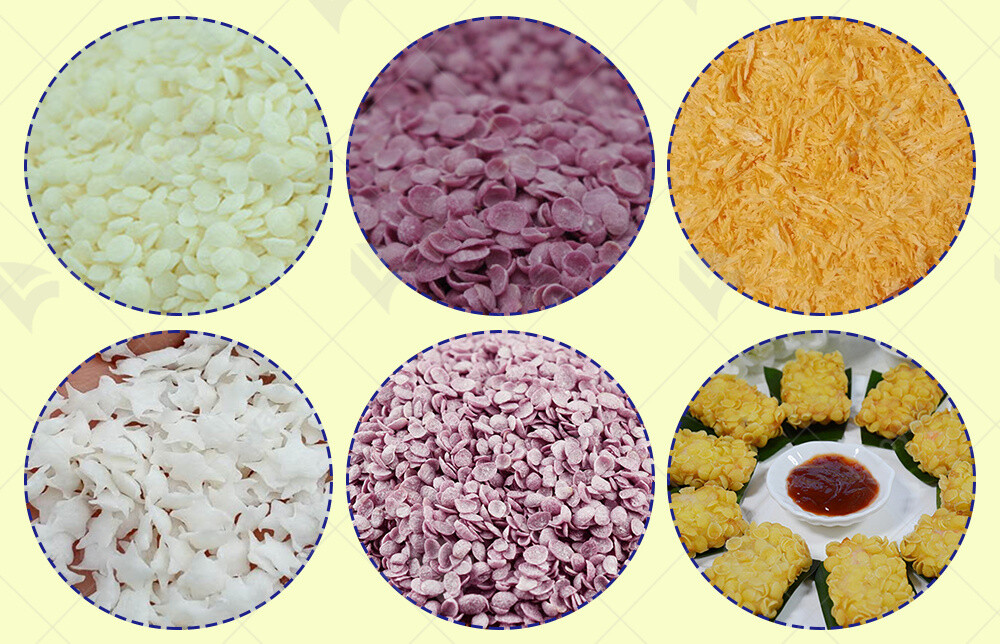
Regulatory Compliance in Bread Crumb Production
Ensuring regulatory compliance in the production of yellow bread crumbs is crucial for maintaining product quality and safety. Yellow bread crumbs extruder operations must adhere to several stringent regulations set by food safety authorities. Firstly, the Food Safety Modernization Act (FSMA) requires manufacturers to implement preventive controls to minimize contamination risks. This involves routine inspections, hazard analysis, and critical control points (HACCP) plans to identify and mitigate potential hazards.
Secondly, compliance with the Food and Drug Administration (FDA) guidelines is mandatory. This includes ensuring that all equipment used in the production line, such as the yellow bread crumbs extruder, is made from food-grade materials and regularly sanitized. Moreover, facilities must maintain detailed records of all processes and incidents to facilitate traceability and accountability.
Lastly, global standards such as ISO 22000 focus on food safety management systems. Adhering to these standards ensures that the entire production process, from raw material sourcing to final packaging, meets international safety and quality criteria. By complying with these regulations, manufacturers can guarantee that their yellow bread crumbs are safe for consumption and meet market standards.

Leading Manufacturers of Yellow Bread Crumbs Extruders
Company | Location | Key Features | Strengths |
| LOYAL | China | Advanced technology, high efficiency, cost-effective | Strong R&D, reliable performance |
| Bühler | Switzerland | Innovative designs, superior quality, global presence | Extensive experience, cutting-edge tech |
| Clextral | France | Twin-screw extrusion, high precision, versatile | Customizable solutions, robust design |
| Baker Perkins | UK | User-friendly, efficient production, durable equipment | Excellent customer support, reliability |
| Habasit | Germany | Hygienic design, energy-efficient, easy maintenance | Focus on sustainability, high hygiene |
Case Studies of Successful Extrusion Lines
Several successful case studies highlight the efficiency and effectiveness of modern yellow bread crumbs extruders. One notable example is from a leading Japanese food manufacturer, who upgraded their production line with a Bühler extruder. This innovation resulted in a 20% increase in production capacity while maintaining consistent product quality. The advanced features of the Bühler extruder, such as precise temperature control and automated cleaning systems, significantly reduced downtime and maintenance costs.
Another case study involves a European bakery that adopted LOYAL's extruder technology. By integrating LOYAL's high-efficiency extruders, the bakery achieved a substantial reduction in energy consumption, cutting operational costs by 15%. The reliability and robustness of LOYAL's equipment also minimized unexpected breakdowns, ensuring smooth and continuous production.
A smaller artisanal bakery in the UK successfully incorporated Baker Perkins’ extruder into their production line. The user-friendly interface and efficient production capabilities of the Baker Perkins extruder streamlined their operations, allowing them to scale up production without compromising on product quality. This investment proved to be instrumental in the bakery's expansion and market penetration.

Innovations and Future Trends in Extrusion Technology
The future of yellow bread crumbs extruder technology is shaped by several groundbreaking innovations and trends. One significant trend is the incorporation of smart technology and the Internet of Things (IoT). IoT-enabled extruders can monitor various parameters in real-time, such as temperature, pressure, and moisture levels. This real-time data collection allows for precise control and adjustments, ensuring optimal product quality and reducing waste.
Another innovation is the development of energy-efficient extrusion systems. Modern extruders are designed with advanced insulation and heat recovery systems, which minimize energy consumption and reduce the carbon footprint. These energy-efficient systems not only lower operational costs but also support sustainability initiatives, making them attractive to environmentally conscious manufacturers.
The trend towards modular design in extrusion technology is also gaining momentum. Modular extruders offer flexibility, allowing manufacturers to easily upgrade or modify their equipment to meet changing production needs. This adaptability is particularly beneficial for small to medium-sized enterprises looking to expand their capabilities without significant capital investment.
In conclusion, the continuous evolution of extrusion technology, driven by smart innovations, energy efficiency, modular design, and advanced materials, promises a bright future for the production of yellow bread crumbs. Manufacturers adopting these technologies will be well-positioned to enhance their production processes, achieve higher efficiency, and maintain superior product quality.
Reference
1.Baker Perkins - bakerperkins.com
2.GEA Group - gea.com
3.Heat and Control - heatandcontrol.com
4.Hosokawa Micron - hosokawamicron.com
5.Fritsch Group - fritsch-group.com













